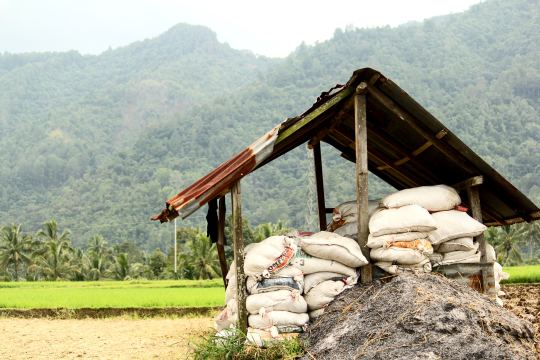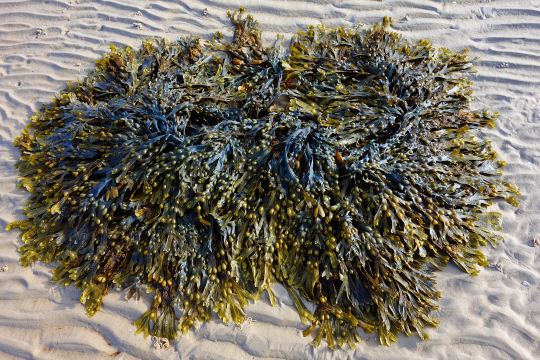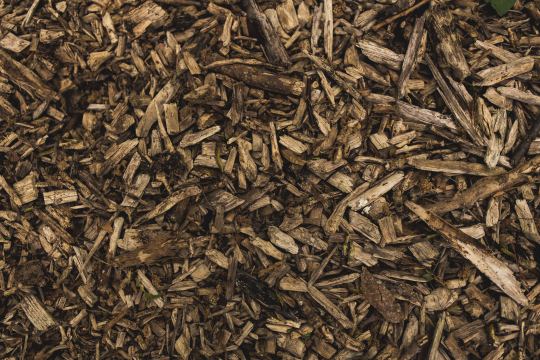Gardening is a tough job. If you let me help you with this, you'll be destined to succeed. Stick around and learn a thing or two, from me - Amy Goodwill - who has been a gardener since FOREVER.
Don't wanna be here? Send us removal request.
Text
Composting - The Definite Guide

Hello everyone, let���s see today, what really is composting?
Composting is taking your own own kitchen scraps and waste materials, and helping them break up into soil that extremely great for your garden. It is essentially controlling and boosting along nature’s decomposition procedure by recycling natural and natural issue and transforming it directly into a nutrient rich dirt amendment. It is a type of “reincarnation, ” when you think about this. Think about the following points, and will also be well upon your method to producing composting a part associated with your normal life.
Area
Whenever you are planning a backyard compost system, pick the area with access in order to a water source, within an area that gets moderate sunlight. You may not need to completely dry aside the composting material, yet the added heat through sunlight does speed together the process.
Everything you May Put In Your Compost Bin
Add both nitrogen-based (or green) and carbon-based (or brown) items into the compost bin.To obtain the breakdown process began and keep it heading, maintain a ratio associated with green to brown from about 1: 2.
Eco-friendly
Green
Vegetable and fruit leftovers
Fresh grass clippings
Ovum and nut shells
Espresso reasons
Tea hand luggage
Bread products
Manure (from cows, sheep, chicken, or even rabbits)
Flat beer
Brown
Cardboard products
Dead simply leaves, branches, pine cones plus needles
Paper egg cartons
Sawdust and hay
Without treatment wood
Tissues and papers
Lint
Shredded junk e-mail
Wine corks (I happen to have a lot associated with these within the compost heap! )
Everything you Shouldn’t Place in Your Compost Rubbish bin
The majority of compost systems do not achieve the necessary internal temperature to completely kill any kind of bacteria present in the particular next items, so this is often best to keep all of them away. Adding synthetic pieces can actually destroy the particular microorganisms necessary for the particular composting process.
Bones plus meats
Fats and meals preparation natural oils
Dairy products
Waste materials from dogs or felines
Treated wooden
Weeds or even diseased plant life
Yard clippings with pesticides or herbicides on them
Size plus Style
Here is precisely where some innovative imagination comes within to try away. If you stay in a smaller apartment, consider vermicomposting, a tabletop composter, or even a smaller bin that matches onto a balcony. Regarding small-scale composting, a individual bin or tumbler-style rubbish bin will be perfect. If a person possess a good amount connected with yard and garden issue to work with, I actually recommend a two- or even three-bin system, like I really am using (pictured above). The benefits here? You can always have an positively composting bin and 1 more which is already cured plus ready to use. Such as a less-structured, freestyle method? In case you are not really concerned with aesthetics, use a “no-bin” style: look for a good out-of-the way room inside your yard plus just create a heap. Layer the particular “green” and “brown” elements, provide a good sprinkling, plus till. In the drop, cover with a tarp, and then let the compost continue establishing within the winter. You may actually bury kitchen plus garden scraps straight into the particular soil between rows associated with vegetables and within beds. Composting can be that simple!
The Necessary Steps
The particular basic steps for composting are: Layering
Sprinkling
Switching
Repeating
Begin by constructing your compost bin upon well-drained soil. I put a layer of flagstone patio and gravel within our bin, to aid along with drainage. Fill your garden compost bin with the 6-inch coating of “brown” matter together with a 2- in order to 3-inch coating of “green” matter. Water until damp, but not soggy, similar to the feel of a moist sponge. Replicate the layering process and turn. The more regularly you change, the faster the natural and natural material will break straight down. The compost is ready when it resembles the color of healthy ground, has a loamy regularity, and wafts a pleasing, earthy fragrance your way. The finished compost will become ready anywhere among about two months and a 12 months, depending after what goes into your compost, your ratio, and precisely exactly how often you turn.
Common Problems and How to Fix Them
Compost will certainly be smelly – You may be the majority of likely not tilling enough enabling correct air blood flow, or maybe you could have watered an excessive amount of. Just add dried out “brown” material and alter. Compost has stalled – Your compost could end up being too dry. Add a lot more “green” material, water, plus turn. Compost is slimy – Presently there can be an excessive amount of dampness within the mix. Add a lot more “brown” material, back away upon watering, and turn.
Tips to Effective Composting

Take the time to break larger pieces into smaller sizes to speed up the process. End up being aware about the 1: 2 ratio of “greens” within order to “browns. ” Activate a brand brand new compost bin employing the shovelful of soil through your own garden, so as in order to bring in beneficial microorganisms, or also opt to acquire the compost activator at your own nursery.
Composting for Anybody
Nevertheless feel overwhelmed, or even usually are you short upon period or space? Whenever i described earlier, try out indoor composting. I furthermore recommend looking at nearby community gardens inside your region. Many delightful your cooking area and backyard waste within their very own composting programs. Perhaps your personal city has a bio-waste pickup program, so a person can simply positioned your personal compostable material with the road. Regardless of your restrictions, you will find options in order to take part in this exciting process! Once you begin composting, your own garden will certainly rejoice. Your own buddies might even enjoy your new hobby plus send their own unnecessary cooking area scraps. 1 of our girlfriends means the remaining pulp from her every day juicing. She is unquestionably obtaining a few of my tomato vegetables later in the time of year in return! Possess a person had success with composting, or are you currently giving this a shot this time of year? Exactly what are or were your own biggest hurdles to conquer?
0 notes
Text
How to Use Seaweed In Your Garden (More Info)

Gathering seaweed for use in the garden
Gather ‘mid-beach’
Seaweed is usually found scattered on the beach from the water’s edge to the highest point of recent high tides. The seaweed ‘mid-beach’ is drier than seaweed at the tide line and therefore lighter to carry. It also has fewer bugs than the seaweed high up on the beach, and is a little more enjoyable to gather.
Use fine, broken up seaweed
Look for patches of seaweed which are smaller sized in leaf size since this will be better to apply as mulch. Established large kelp fronds apart – the wide parts are difficult to type around plants in the particular garden beds. The kelp works extremely well to make ‘kelp tea’ and used being a foliar spray to prevent insect pests.
Use red onion sacks or woven poly bags or buckets
We all like onion sacks regarding gathering seaweed because they will are lightweight, water pumps out out easily, plus they are straightforward to grip. They are furthermore small enough that we all don’t overload ourselves along with heavy sacks. Woven poly bags good if a person can find them – ask at your entire foods store because these types of bags are widely-used to deliver whole grains. Don’t make use of plastic garbage bags because they are too difficult in order to handle. Both hands get slimy when picking seaweed plus this transfers towards the handbag so that it is slippery.
Limit your own impact by picking gently from several locations
Every patch of seaweed offers food and shelter for several small marine species. Choose no more than the next from the seaweed through any patch, and shift on to another place.
Applying Seaweed to Your own Garden Beds
Apply seaweed within 36 hours associated with collecting it. Seaweed breaks down and decomposes very quickly, in particular when in a good enclosed sack. In case you depart the seaweed within the sacks too long, it gets sludgy and slimy, and is more difficult to spread evenly over the soil.
Apply thickly, at least 4 – 6” deep
Spread the seaweed thickly and evenly around the garden beds to cover any exposed soil. You may think you’re adding too much, but in a few days you will think otherwise.
Seaweed Mulch Around Plants
In this picture you can see the bare spots showing how much the seaweed has shrunk after the first application. Only a few days earlier, the seaweed was 4 – 6” deep with no soil showing through.
Reapply in one week, another 4 – 6” deep
Seaweed shrinks when it dries. Even a generous layer of seaweed will dry in a few hot days to expose much of the soil. The seaweed will become very stiff and crispy. Ideally, you should reapply in a week or so, and this second application will dry out but still provide good coverage for your soil. Once we make the second application, our beds are often well-mulched for at least 4 – 6 weeks even in hot, dry weather.
Leave a clear space around plant stems
Once you have spread the seaweed around the plants, push it back merely a little through the plant comes so they aren't within direct contact with the particular wet seaweed. Once this dries, the seaweed will ‘shrink’ away from the particular stems, but it’s the good habit with any kind of mulch to help keep plant comes clear.
It’s OK in order to mix seaweed to mulch
We use whatever mulch we can get, and it also doesn’t matter if a person mix several varieties associated with mulch on the garden mattress. For example, our tomato vegetables are mulched with dried out grass clippings (straw) plus topped with seaweed. Within the fall we’ll include maple leaves. Mix plus match, it matters not really.
Don’t Use Seaweed in Order To Cover Garden Paths
Several men and women use seaweed since a pathway mulch yet this is a waste materials of good seaweed, which usually is better used upon your garden soil for the particular reasons in the above list. If seaweed is employed on pathways, this quickly thins out in order to allow weeds to obtain by means of. And the seaweed can become very slippery underfoot following a rain.
0 notes
Text
How To Mulch With SeaWeed- All You Need To Know

Great things about seaweed for gardening
Accumulating seaweed for the backyard garden happens to be a favorite getaway for our family. We all usually take a smaller skiff to a local beach and load up with as many sacks as we can safely transport home. It’s fun for children, as they can participate as well as an adult, or they can simply enjoy the beach while we gather the seaweed. As we fill up our sacks, our thoughts drift to the many benefits this will bring our garden.
Saves water, keeps soil moist at ground level
The purpose of any mulch is to keep garden soil from drying out at the surface. And by avoiding moisture from evaporating, mulch reduces the need for watering. The practice of mulching is essential in areas where conditions are hot and dry.
Eliminates the need to weed
Mulch is useful in that it blocks new damaging weeds from sprouting. Because the soil beneath the mulch remains to be moist, any weeds which often do manage to develop from the mulch are straightforward to pick.
Repels slugs in addition to other infestations
Slugs usually are immediately repelled by a couple of things – salt in addition to sharp-edged materials. Seaweed has a natural salt content which resists slugs, and within the couple of days of application this dries and becomes really crispy. Slugs do not really like “crispy” surfaces, because the sharp salty sides cut into the smooth body tissue. While a few mulches may provide concealing spots for slugs, earwigs and other pests, seaweed mulch does not possess this disadvantage.
Enriches the particular ground
Seaweed is the broad spectrum fertilizer that will is rich in advantageous trace minerals and bodily hormones that stimulate plant development. Seaweed is high within carbohydrates which are important building blocks in developing plants, and low within cellulose therefore it breaks straight down readily. Seaweed shares simply no diseases with land vegetation.
Boosts lethargic vegetation
Seaweed fertilizer contains a good amount of completely chelated (ready to use) micro-nutrients which may become readily absorbed by vegetation without further chemical decomposition needed.
Helps lighten the particular ground
Compacted soil may benefit as seaweed mulch breaks down. Since the materials becomes incorporated in to the ground, aeration is improved plus the soil becomes a lot more crumbly and moist.
Will not contain weed seeds, in contrast to bark mulch
Two many years ago we used industrial bark mulch to protect our garden pathways with regard to the purpose of obstructing weeds. Today, these paths are sprouting horsetail, a good invasive weed which might be difficult to eliminate. Seaweed does not provide any foreign weed seed products into your garden.
It’s free!
But what about salt? Is this a trouble?
We have been applying seaweed as mulch regarding many years and have not necessarily seen any adverse result, such as a sodium overload in the dirt. In our region we all have a lot of rain. Should you be worried about sodium, ocean weed might be distribute out above the front yard and washed out with the hose. Needless to state this is not the great and concerning issue if a person is usually using fresh water lake bud.
1 note
·
View note